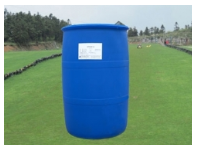Surfactants are substances that can significantly reduce the surface tension and interfacial tension of liquids. Their molecules are composed of polar hydrophilic group and nonpolar hydrophobic group. The hydrophilic part is carboxyl group, sulfate group, sulfonic group, amine group, quaternary ammonium group and hydroxyl group, while the hydrophobic part is represented by long-chain alkanes and aromatic hydrocarbons.

Because of their amphiphilic properties of hydrophilic and oleophilic, the surface properties of cleaning solution can be changed during chemical cleaning, resulting in lower surface tension, better wettability and foaming property. According to the charge of the surface active part, the surfactants can be divided into four categories: anionic, cationic, nonionic and amphoteric.
The main cleaning agent, corrosion inhibitor and surfactant are the three major components of chemical cleaning solution. The special chemical structure of surfactant determines that the surface tension of the solution is greatly reduced and the wettability of the solution is improved after the surfactant is dissolved in the liquid solution. Especially when the concentration of surfactant in the solution reaches the critical CMC concentration, the surface tension, osmotic pressure, viscosity and optical properties of the solution change significantly.
The wetting, penetration, dispersion, emulsification and solubilization of surfactants in chemical cleaning process can achieve twice the result with half the effort. In summary, surfactants in chemical cleaning have two main functions: one is to increase the apparent concentration of insoluble organic pollutants by micellar dissolution, that is, solubilization; the other is that surfactants have amphiphilic groups, which can adsorb or enrich at the interface between oil phase and water phase, thus reducing the interfacial tension.